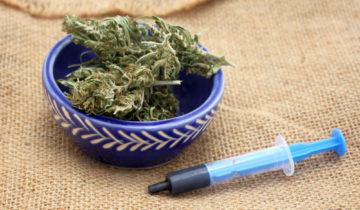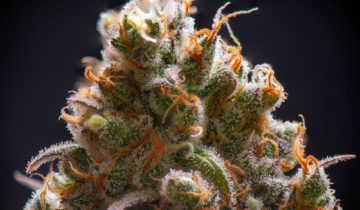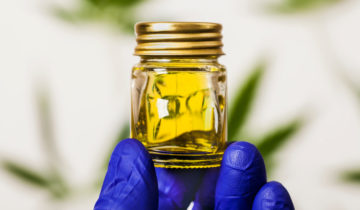Keeping your cannabis fresh, potent and uncompromised is the best way to ensure that you can enjoy it for the long term, and learning how to store weed is the first step.
While it may seem straightforward, there are common mistakes that users make that lead to the demise of their cannabis. Whether it’s through diminished potency or the development of unsavoury and unwarranted additions to the bud such as mold, the best ways to store weed are often not the simplest ones.
With this in mind, there are methods for storing cannabis that can prevent these undesirable outcomes from happening.
Today, we’ll outline tips and best practices for how to store weed to ensure that your cannabis and cannabis products survive long-term storage and are usable for as long as possible.
Why Learning How to Store Weed Properly Matters
Many users typically forgo or neglect the fact that cannabis, like other consumable products, has a limited shelf life.
This doesn’t necessarily mean that it comes with a specific expiration date. But if your weed is not cared for properly, you can lose significant amounts of quality and potency.
If kept under improper conditions, weed can ultimately deteriorate and go bad. This will cause your flower to become brittle and dry and make for a very poor smoking experience.
Those who have consumed older cannabis can attest to the fact that it supplies a far less pleasurable experience than ingesting marijuana maintained under optimal conditions.
That said, becoming dry and brittle isn’t the only potential outcome for ineffective methods to store your weed.
What can also occur when the marijuana is kept in undesirable humidity conditions, is mold and mildew development.
Nobody wants moldy weed.
Not only is it the result of poor attention for how to store your weed, but it’s also entirely unsafe to consume and therefore unusable. Smoking moldy cannabis can damage one’s lungs and also potentially cause users to become very ill.
As such, allowing your cannabis to reach this point is not only a waste of good marijuana but ultimately money, as well.
In this way, ensuring you make an effort to properly store your cannabis is the most effective method for preserving its integrity, unique terpene and potency profile and making sure its shelf life lasts as long as possible.
Best Way to Store Weed
One of the first things that cannabis users should learn is that the packaging their products come in doesn’t serve as the best container to preserve weed for extended periods of time.
In most instances, the packaging serves as a short-term solution to have your products transported from point A to point B safely and effectively.
With this in mind, below, we will highlight the most effective best practices for how to store weed.
Light

Light and exposure to UV rays can be detrimental to the preservation of cannabis. This is due to light deteriorating and breaking down the THC molecules present in marijuana, serving to degrade the cannabinoids and terpenes present in your cannabis.
Additionally, prolonged light exposure will eventually cause your marijuana to dry out, contributing to a harsher, less favourable smoking experience.
Even if users make sure they use the proper storage containers, UV exposure will always degrade your weed.
In this way, one of the first rules for how to store your cannabis is to keep it out of direct light and sunlight as much as possible. Instead, it’s better to keep cannabis in a dark or dimly lit area or an opaque container.
Moisture
Just as light can dry out your cannabis, exposure to too much moisture will also negatively affect its integrity, shelf life and overall usability. As we highlighted previously, humidity can contribute to creating an ideal breeding ground for unsavoury organisms such as mold to grow on your cannabis.
Maintaining appropriate moisture levels is paramount when storing weed. Users may have difficulty striking the perfect balance at first, particularly if they aren’t familiar with terms such as RH or relative humidity.
Essentially, relative humidity refers to the amount of water vapour present in the air compared to how much it could hold at that temperature. It is typically shown as a percent. In the context of cannabis, specifically, the ideal humidity range to store cannabis is 59-63 RH.
Most users will utilize tools to help monitor and maintain a particular level of humidity, with devices such as a hygrometer or a humidity control pack. A hygrometer is a device that measures humidity.
Alternatively, a humidity control pack serves to keep marijuana at an ideal humidity level by adding or removing excess moisture within an enclosed space (i.e. wherever you’re storing your cannabis).
Users can find these tools easily online. They serve as a worthwhile investment for maintaining proper humidity levels to preserve your medical marijuana for as long as possible.
Air

While too much moisture can cause mold growth, too much oxygen can cause your weed to dry out. Ultimately, as this information reflects, the method for how to store your weed and keep it fresh comes down to a delicate balancing act.
While dried-out cannabis isn’t going to cause you any harm, it will significantly impact your overall smoking experience by degrading the crucial terpenes that contribute to a strain’s unique set of aromas and flavours.
In other words, if left to dry out, your weed will become less potent and less flavourful, contributing to a far less favourable smoking experience than if it were to be stored properly.
To rectify this unfortunate outcome, users should invest in an airtight container, with a glass jar or mason jar serving as the most effective solution.
Plastic containers will do if users are in a pinch. However, since plastic in warmer conditions can lead to condensation, this could introduce more moisture to your cannabis and ultimately lead to adverse effects.
Temperature
Finally, monitoring the temperature of cannabis is vital for two primary reasons.
Firstly, maintaining optimal temperature levels helps keep mold from developing. Temperatures above 24°C (75°F) are optimal conditions for mold to grow. In this way, users should make sure that the temperature at which they store their weed remains below this threshold.
Secondly, often accompanying light, warmer temperatures break down the cannabinoids and terpenes present in cannabis, further diminishing its quality and flavour.
With this information in mind, the ideal conditions for storing weed would be to keep it in a cool, dark place and preferably in airtight glass jars.
That said, users should also avoid stringing their weed in the freezer or at freezing temperatures. Storing weed in the freezer for extended periods should only be utilized as a last resort.
Learn How to Store Weed to Keep Your Cannabis Fresher for Longer
Although these tips may seem relatively trivial, they can make a substantial difference in preserving the various components of your cannabis for extended lengths of time.
Ultimately, keeping your weed in an airtight glass jar, with a humidity control pack in a cool, dark area, will set you well on your way to prolonging the shelf life and preserving the cannabinoids and terpenes in your cannabis for longer.
Not adhering to these storage practices could negatively impact your cannabis, including it drying out or developing mold – neither of which are desirable outcomes or scenarios. Additionally, ingesting moldy cannabis can have serious health repercussions through damaging users’ lungs and potentially making them very sick.
In this way, understanding the fundamentals of appropriate cannabis storage preserves its integrity and flavour while also protecting consumers from potentially unsafe situations.
Stay safe!




 No products in the cart.
No products in the cart.